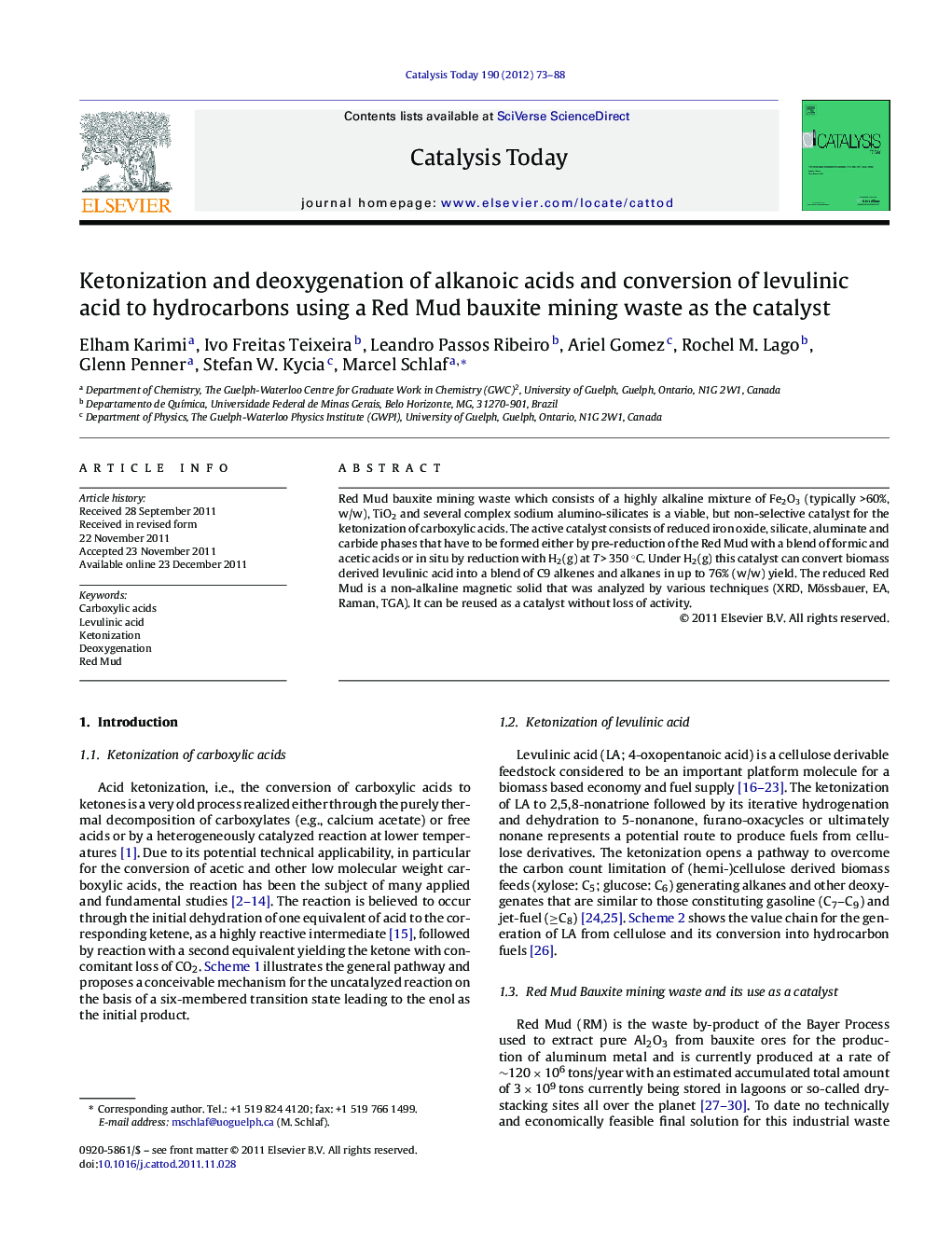| Article ID | Journal | Published Year | Pages | File Type |
|---|---|---|---|---|
| 55237 | Catalysis Today | 2012 | 16 Pages |
Red Mud bauxite mining waste which consists of a highly alkaline mixture of Fe2O3 (typically >60%, w/w), TiO2 and several complex sodium alumino-silicates is a viable, but non-selective catalyst for the ketonization of carboxylic acids. The active catalyst consists of reduced iron oxide, silicate, aluminate and carbide phases that have to be formed either by pre-reduction of the Red Mud with a blend of formic and acetic acids or in situ by reduction with H2(g) at T > 350 °C. Under H2(g) this catalyst can convert biomass derived levulinic acid into a blend of C9 alkenes and alkanes in up to 76% (w/w) yield. The reduced Red Mud is a non-alkaline magnetic solid that was analyzed by various techniques (XRD, Mössbauer, EA, Raman, TGA). It can be reused as a catalyst without loss of activity.
Graphical abstractFigure optionsDownload full-size imageDownload high-quality image (173 K)Download as PowerPoint slideHighlights► Red Mud mining waste is catalyst for the ketonization of carboxylic acids in moderate selectivity. ► Use of Red Mud as a catalyst requires its partial pre- or in situ reduction to magnetite at T > 350 °C. ► Under H2(g) the catalyst effectively converts levulinic acid to a blend of alkenes and alkanes.
